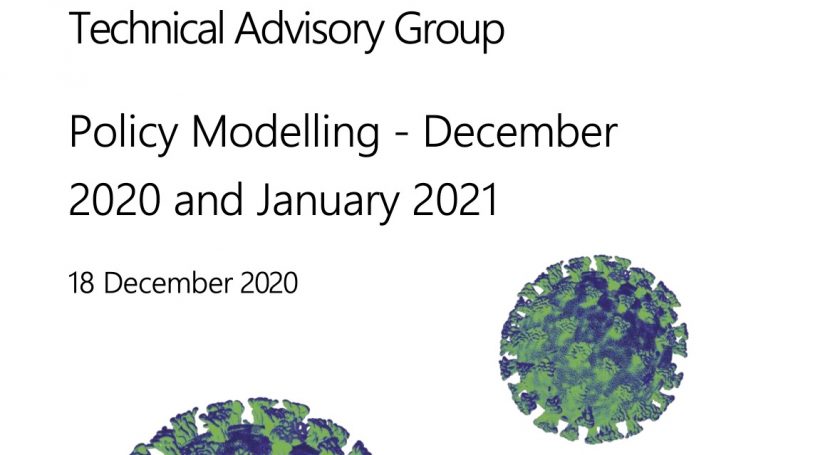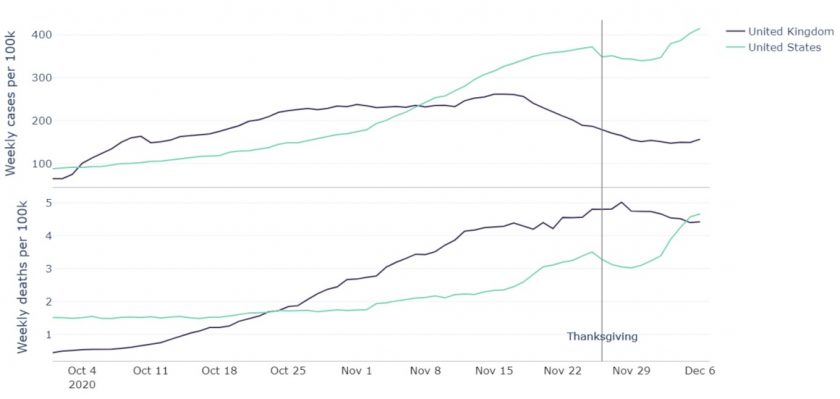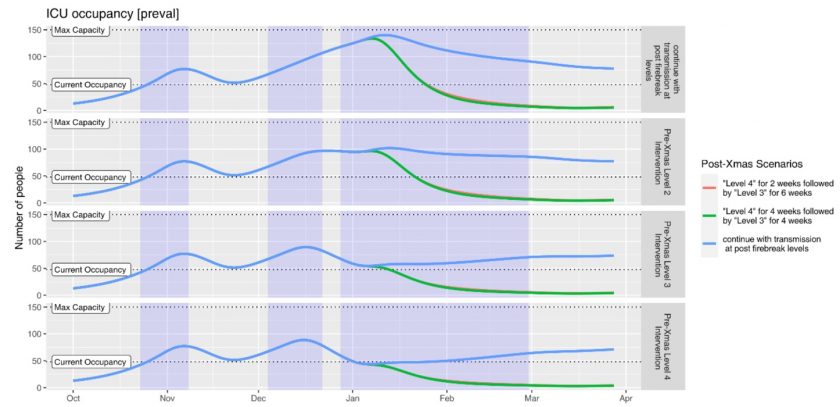Technical advice group tells Welsh Government “remove the Christmas relaxation policy and move to Level 4 as soon as practically possible”

The latest technical advice given to Welsh Government has been published, showing they were presented with information suggesting a removal of the festive relaxation policy.
The latest advice document from the Technical Advisory Group, or Cell (TAC) has been published, and unusually the document is dated the 18th (yesterday) and was published last night. That is in contrast to many such documents previously that are dated several days before they are made public.
The TAC is a ‘conduit and interpretation group’, interpreting UK Scientific Advisory Group for Emergencies (SAGE) outputs into a Welsh context, relay relevant information and questions from Welsh Government to SAGE as well as feed the information to groups such as Local Resilience Fora.
As normal every page points out the document is NOT WELSH GOVERNMENT POLICY (including the capital letters) and there has been no change to the Welsh Government policy.
The paper makes summary statements on the Christmas measures, and indicates the confidence in each statement, “The current growth in the epidemic combined with Christmas mixing is likely to lead to a substantial increase in NHS demand and reduction in NHS and social care capacity in the New Year (high confidence). The potential beneficial impacts of higher alert levels, with regard to prevented harm from COVID-19, will depend on the public’s willingness, understanding, motivation and ability to adopt protective behaviours (e.g. not mixing between households).”
“The uncertainty that the Christmas mixing period gives to forecasting data makes the confidence intervals too wide for reliable estimation of future NHS demand. A risk-based approach should be adopted. (high confidence)”
“The most efficient way to reduce harm from covid-19 and pressure on the NHS is to remove the Christmas relaxation policy and move to alert level 4 restrictions as soon as practically possible (high confidence)”
Data from the USA and Canada has been included after significant rises attributed to widespread travel and mixing for Thanksgiving:
The document says: “Lessons learnt from winter celebrations elsewhere point towards a period of increased transmission following an increase in travel and household mixing. Reports suggest that both Thanksgiving in the U.S. (22 November) and Canada (21 October) led to periods of increased epidemic growth. The virus spreads through mixing. If Christmas leads to substantial mixing we see an increase in infection. (high confidence).”
Twelve different festive models are presented, with it explained: “The Figures below show the modelled effects of 12 different pre-Christmas and post Christmas policy scenarios. Each of the scenarios can be read from left to right, from the recent date of 4 December, to the start of the period of reduced restrictions 23 December, up until the end of the post-Christmas period of reduced restrictions 28 December. The results do not extend after the 28 February, conditions thereafter could significantly change the modelled outcomes (e.g. relaxation would increase transmission).
“The red section of the line indicates additional mixing during the Christmas period, estimated to result in a further 10% additional transmission. For example, in the first ‘No intervention’ scenario, where the background Rt is assumed to be 1.3 (4 December), the cumulative number of COVID-19 patients requiring hospital and ICU beds is estimated to be 7,232 and 986 respectively, with 2,422 deaths.”
The report states, “The maximum number of reductions in the cumulative number of hospital and ICU beds would result from both pre and post-Christmas level 4 conditions and could prevent the loss of 1,400 deaths, 670 ICU beds and five thousand hospital admissions.”
A preliminary economic analysis of scenarios was also carried out, “This included estimated costs of covid-19 hospital and ICU admissions, a conservative estimate of the cost of covid-19 deaths, estimates of quality-adjusted life years (QALYs) lost from Covid community cases, covid hospital admissions and deaths, and a very conservative (low end estimate) of the QALYs lost from long covid. The true costs and QALYs lost from COVID-19 are likely to be higher than these estimates as they do not include post-hospital rehab, the likely full implications of multi organ damage, productivity or informal care costs”
Such analysis surfaces in the conclusions, “The preliminary health economic analysis suggests that long periods of level 4 may cause considerable socioeconomic harm which counterweights the health benefits. This suggests that any move to level 4 should be kept under review, for instance weekly, and considered in the context of socioeconomic harms as well as indicators of covid transmission and related harm”
Three further graphs showing the modelling output are also provided:
You can view the quite readable advice document in full here.
Spotted something? Got a story? Email [email protected]

















